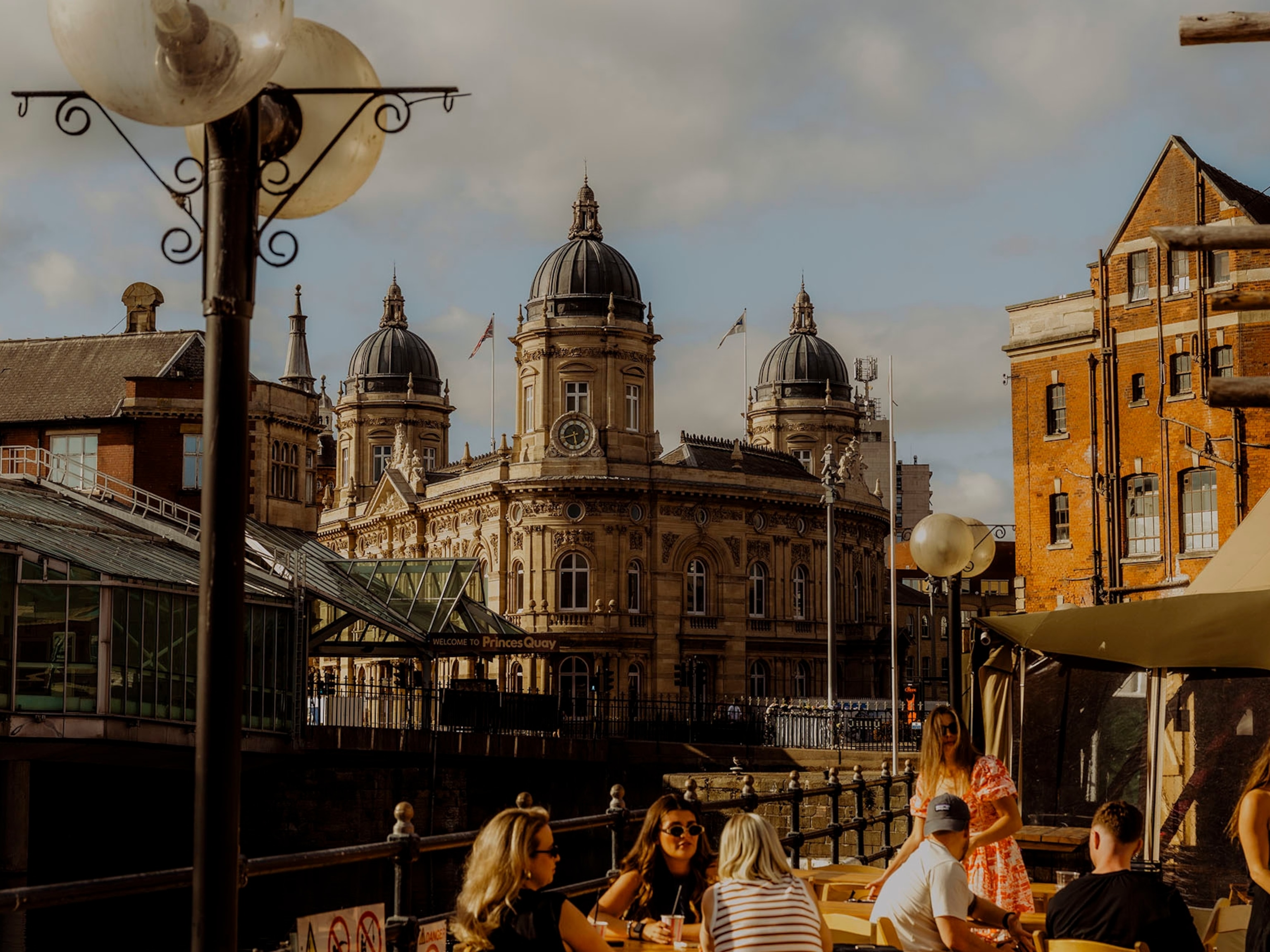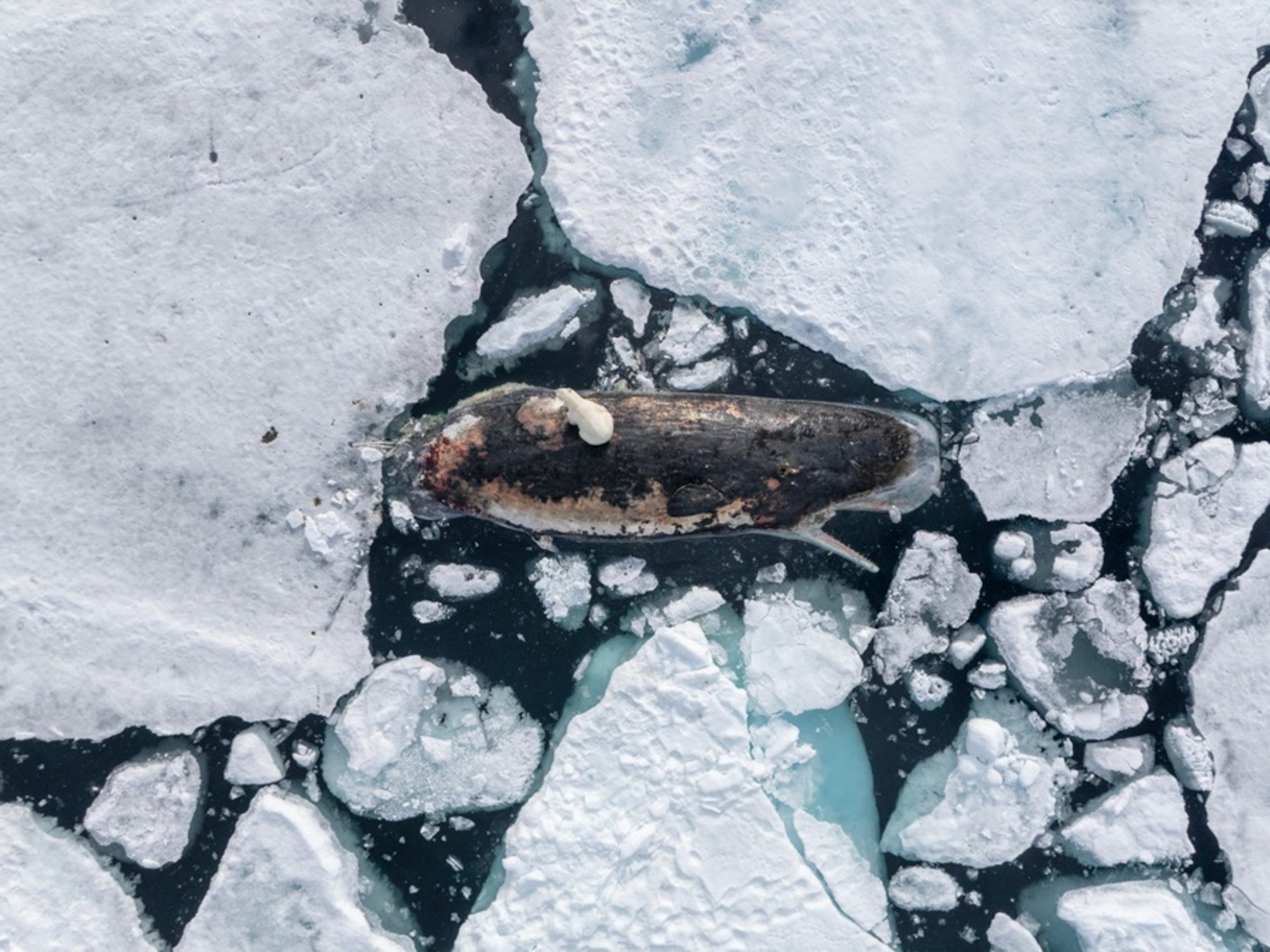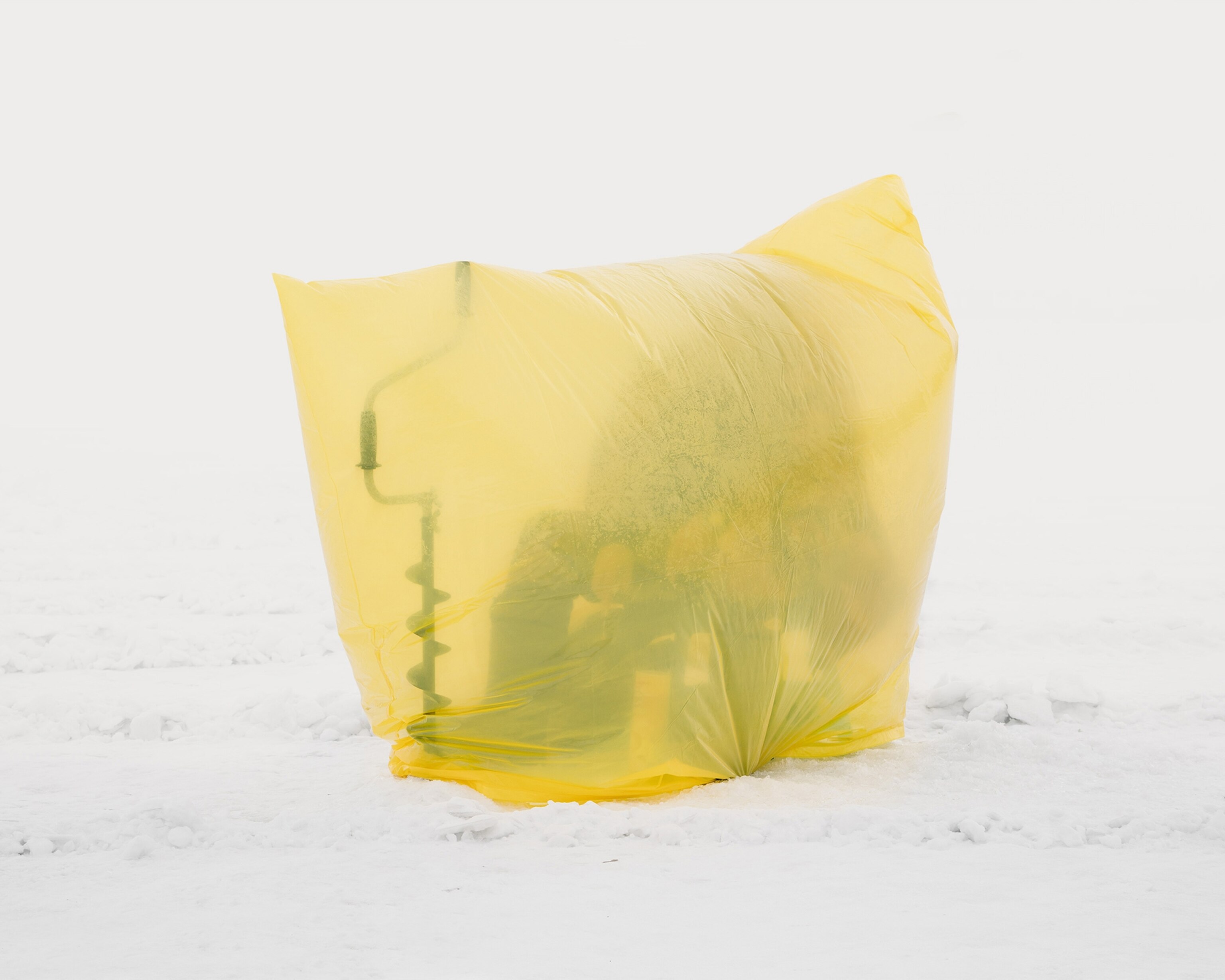
The Hidden Ice Fishermen of Kazakhstan
When icy winds blow through the country's capital, Astana, ice fishermen find ways to persist.
Kazakhstan was once a nomadic, quiet country, much of it, in the words of Nikita Khrushchev, “virgin land.” When the country gained independence from the Soviet Union in 1991, it began an often awkward transition to the modern centralized power of a settled people. The most illustrative example of this transition may be the capital city, Astana, which grew from its earlier emptiness (and its earlier name: Tselinograd) into a cultural, tech, and economic capital, the kind of built-overnight 21st-century oil jungles of Doha or Dubai.
Oil has brought the region prosperity and energy, but not to everyone—namely the people shadowed by corporate high-rises and multinational millionaires created by the boom. For every Astana, there are hundreds of smaller towns all across Central Asia, each slow to develop its identity. Photographer Aleksey Kondratyev, himself born nearby in Kyrgyzstan, wanted to document this transition, in small communities and big ones, and eventually in Astana itself.
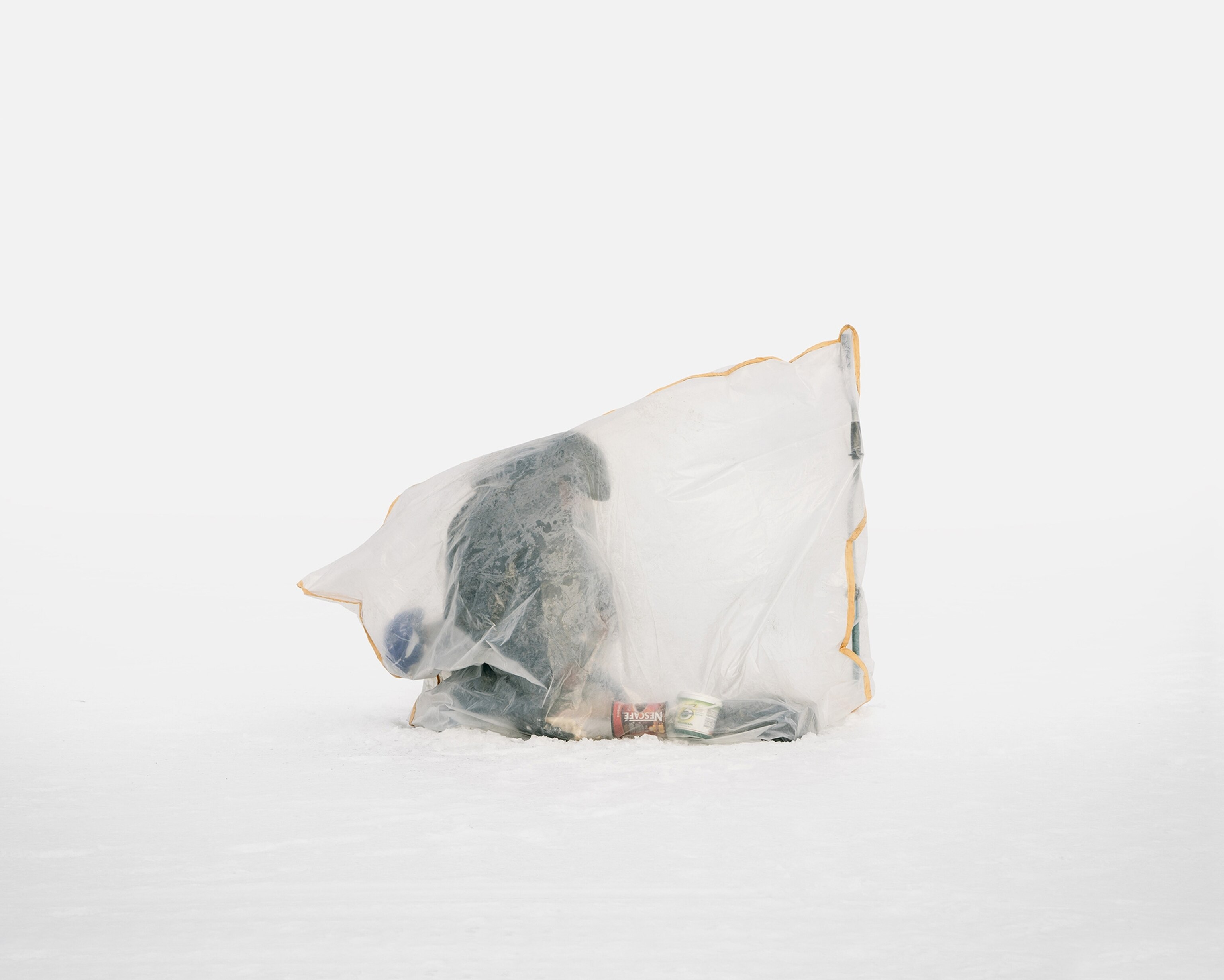
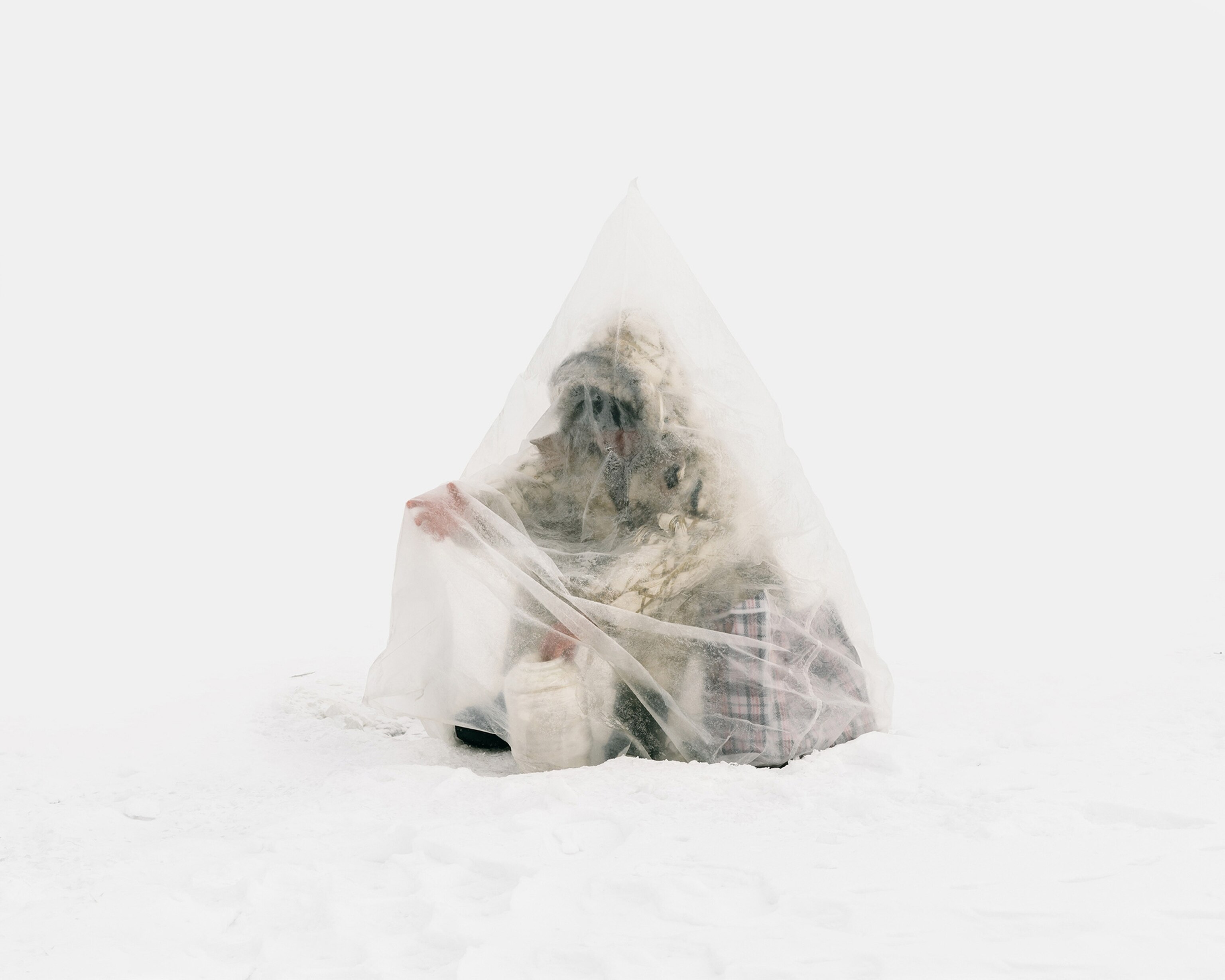
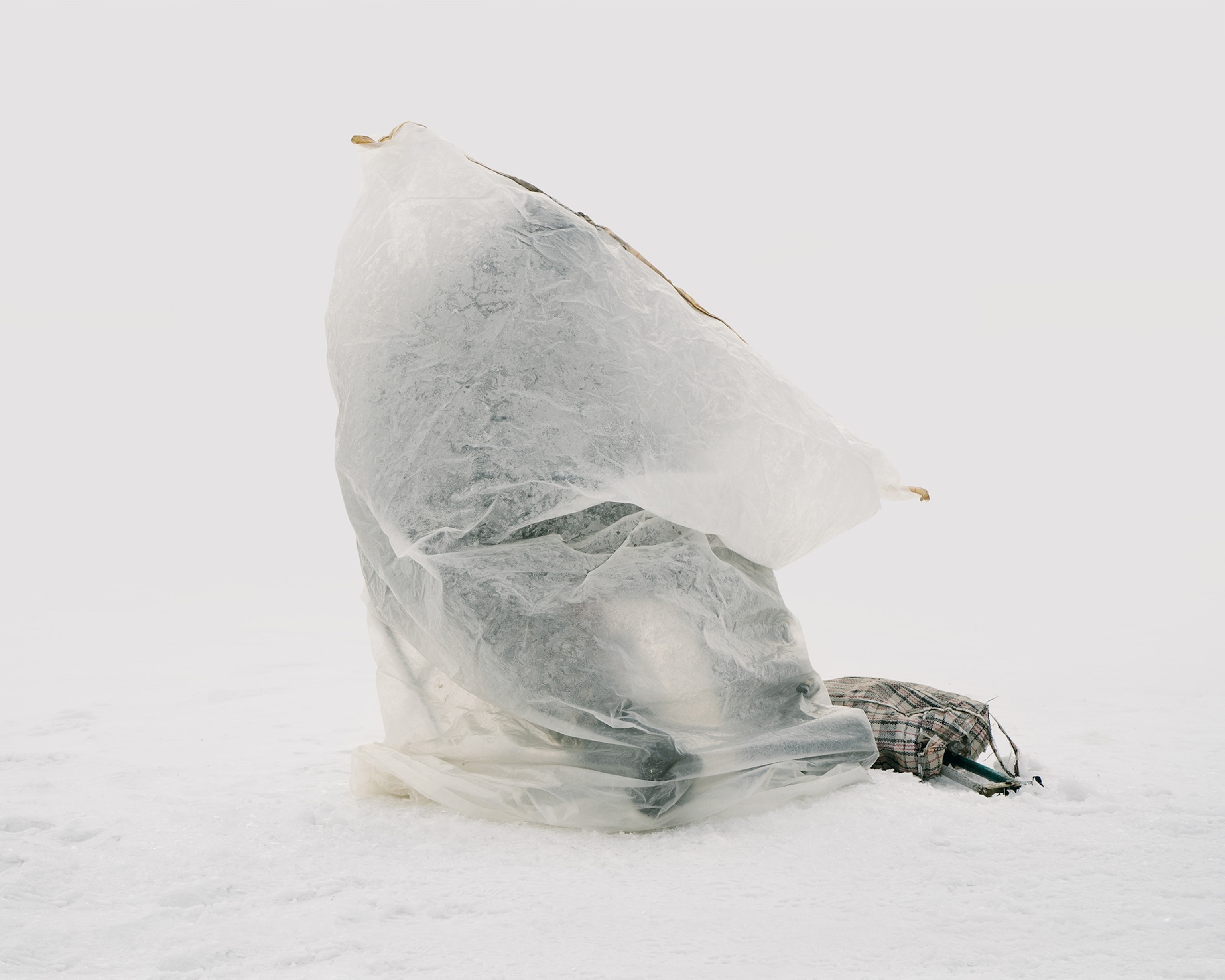
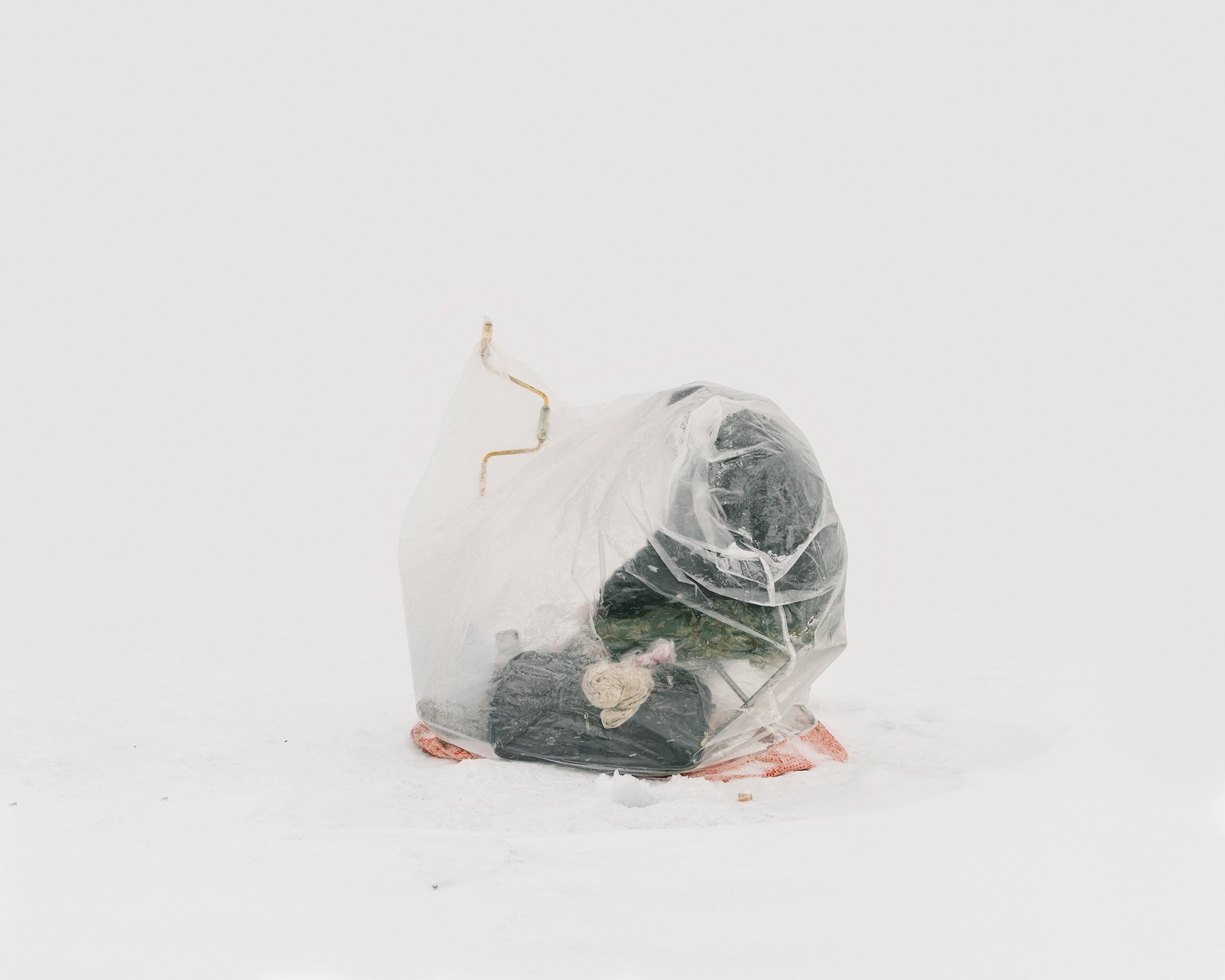
For such a stylish young city, there was an element of old-worldliness that struck Kondratyev as an especially sharp contrast between youthful zeal and tradition. In central Kazakhstan, the second coldest habited region on Earth—behind only Ulaanbaatar, Mongolia—the photographer noticed the curious habits of subsistence ice fishermen. On the Ishim River that bisects Astana, fishermen would spend all day hoping to catch perch, rudd, and bream.
Cutting a hole in the ice and waiting is universal for anyone who’s ever fished on ice. But to shield themselves from the icy winds, at times colder than minus 30ºF, the Kazakh fishermen construct small shelters out of plastic bags. The sheets were often found material: discarded bags of rice or thrown-away grocery remnants. For people who subsist off lake fish, such materials are good enough not only for wind breaking but also for warming the tent each time the man inside exhales.
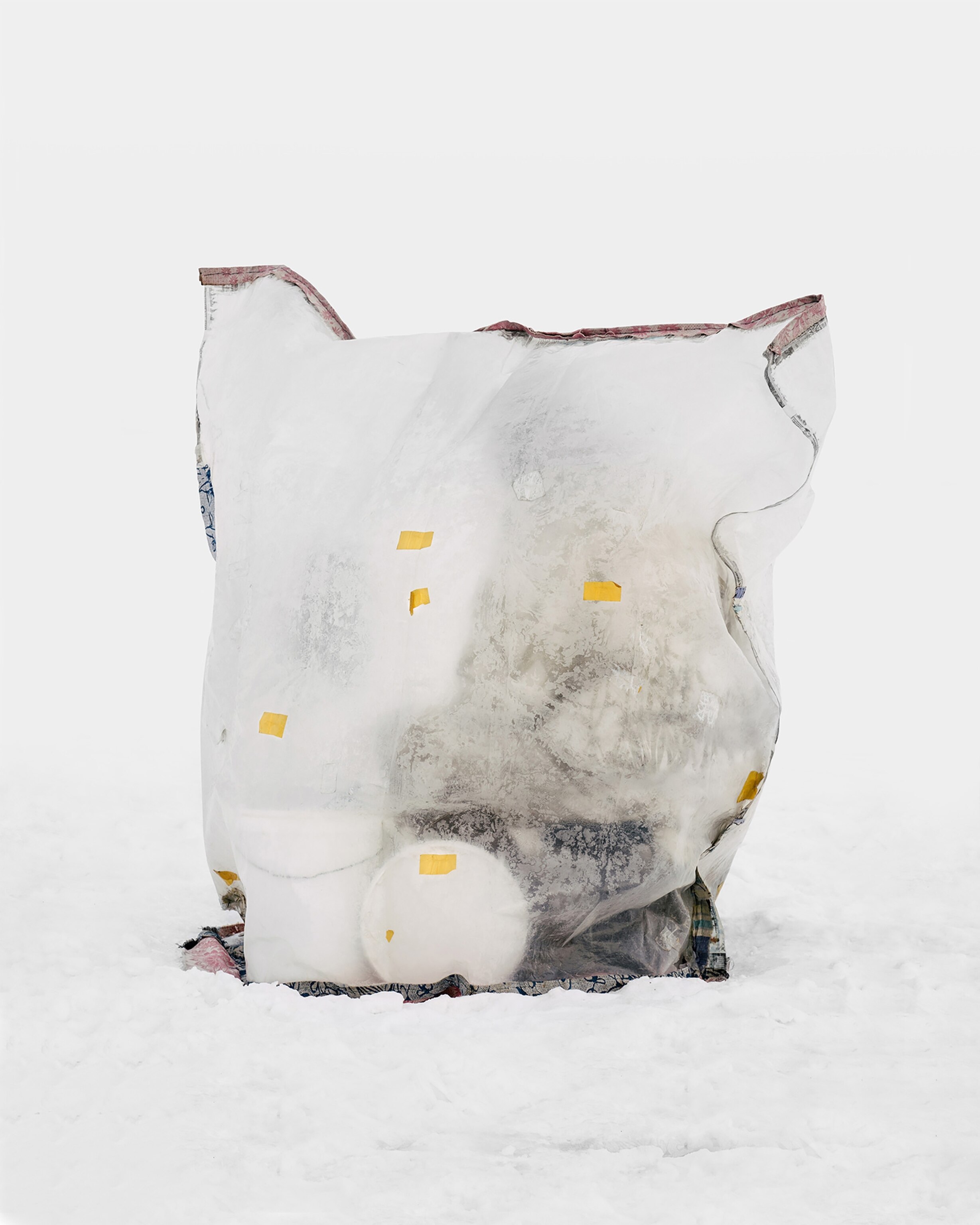

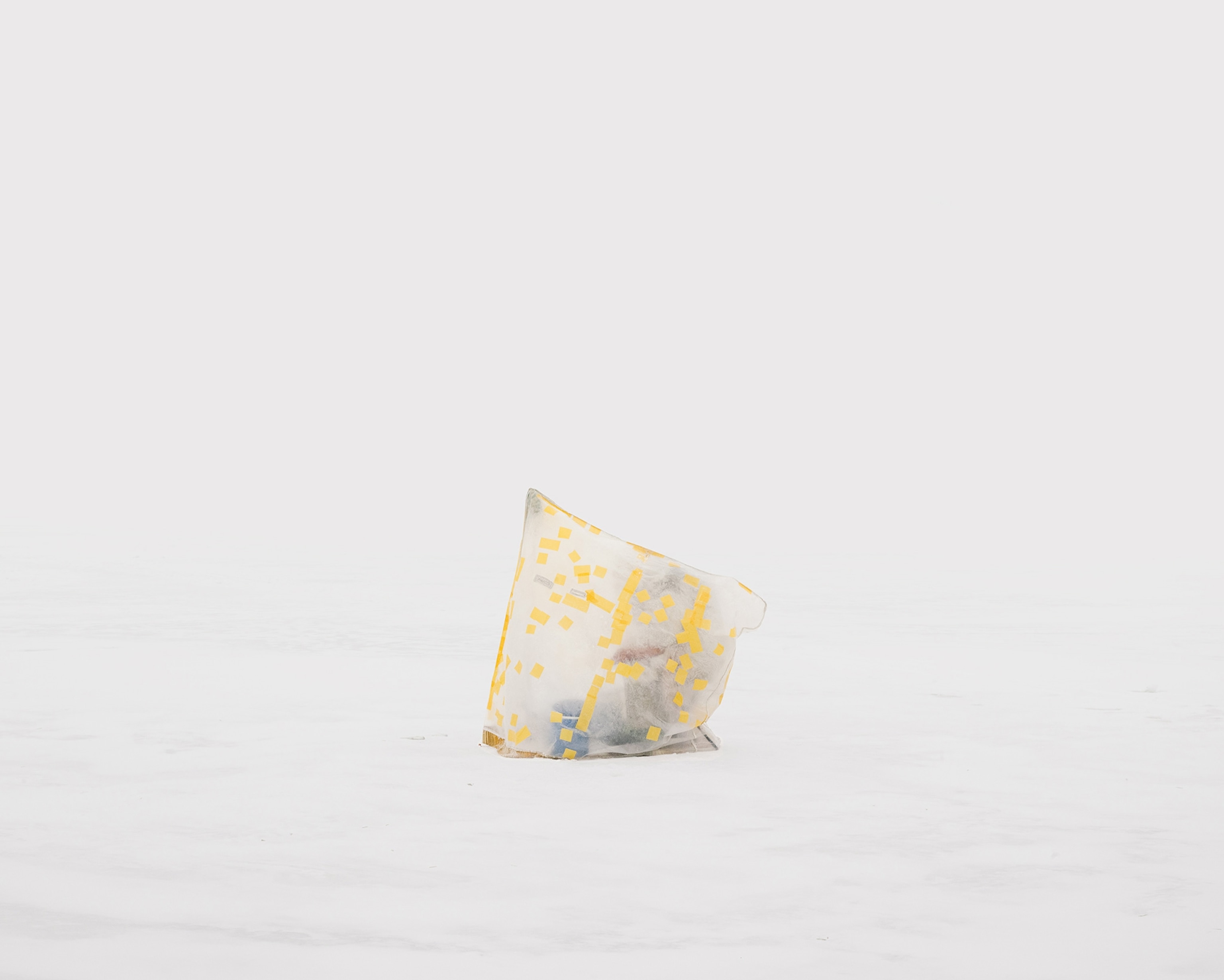
To get his shots, Kondratyev would walk up to a tent and knock on its plastic exterior. Sometimes just touching it would startle the person on the other side. Most of the men waved him off, assuming he wanted a full portrait. When he clarified that he was only interested in their shelters, they admitted that they found it strange but agreed. He noticed that the men tended to be older, decades of ice fishing visible in their eyes. Their effort was primarily to catch fish, but kneeling on the ice seemed also a sort of meditation, a silent, solitary passing of time from dawn to dusk.
Outside the tents, and through Kondratyev’s lens, the men and their plastic took on a different function, as effortless human statues, the kind only possible by people too busy to create art. “I was interested in examining the material and aesthetic forms of these improvised protective covers and the way in which they functioned as inadvertent sculptures,” Kondratyev says. In a city so focused on the new and flashy, the classic and unassuming tended to stand out, an artistry remarkable in the ways it wasn't intended.

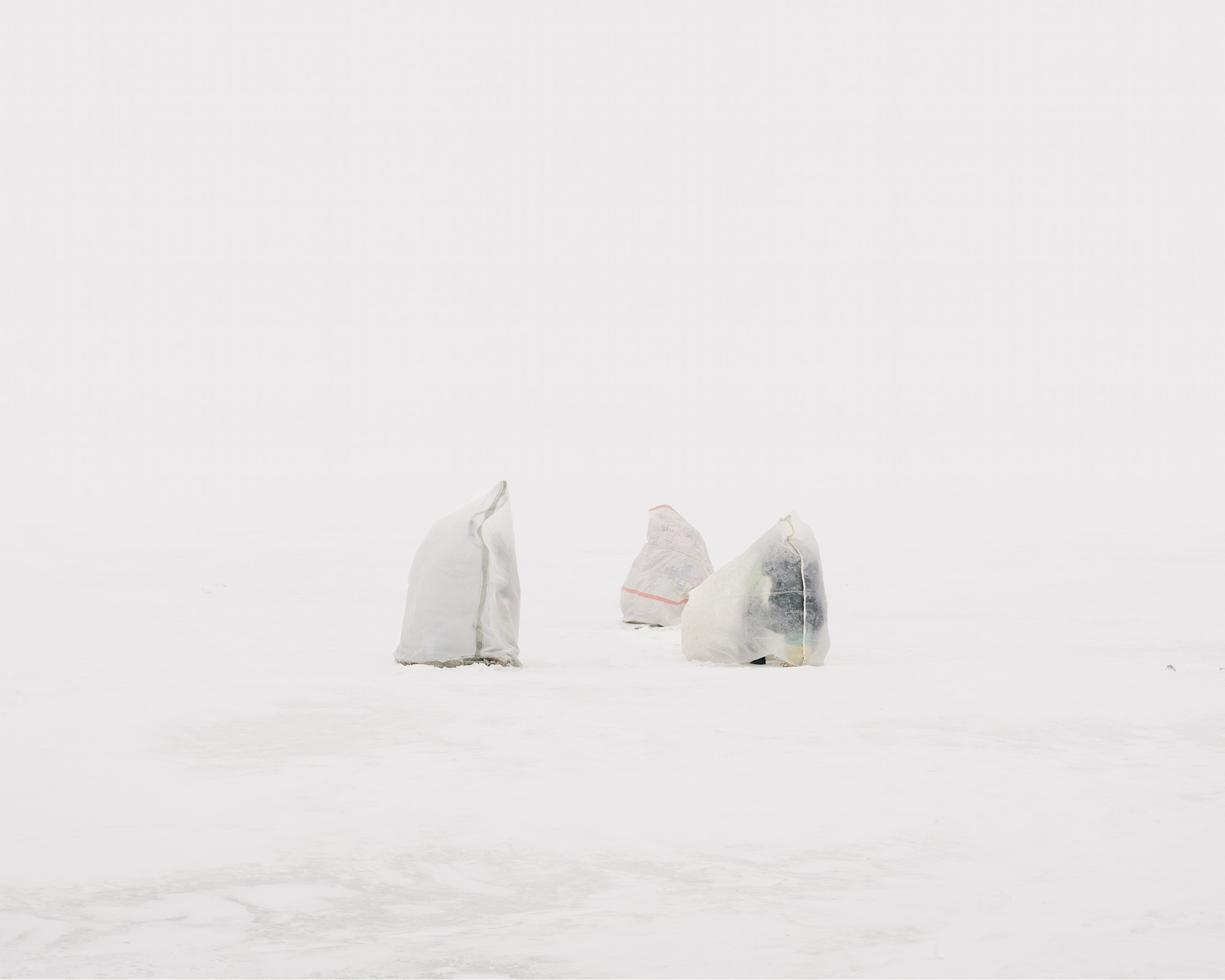
You can see more of Aleksey Kondratyev's work on his website.



